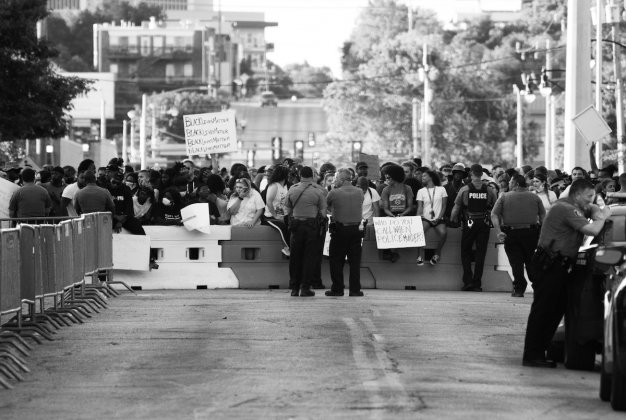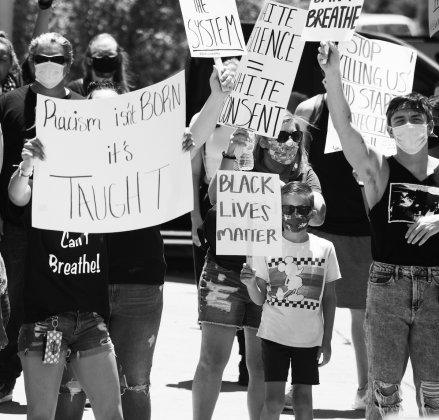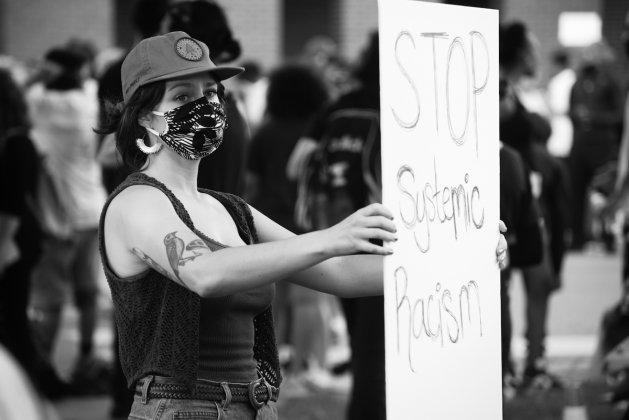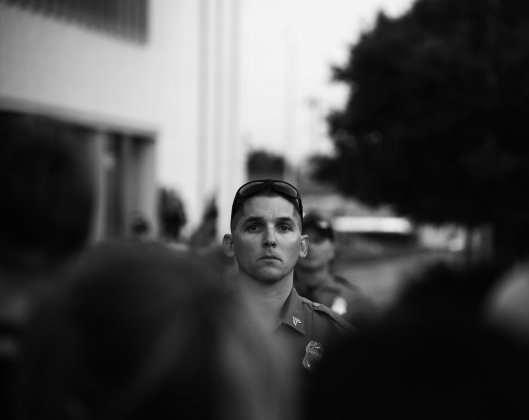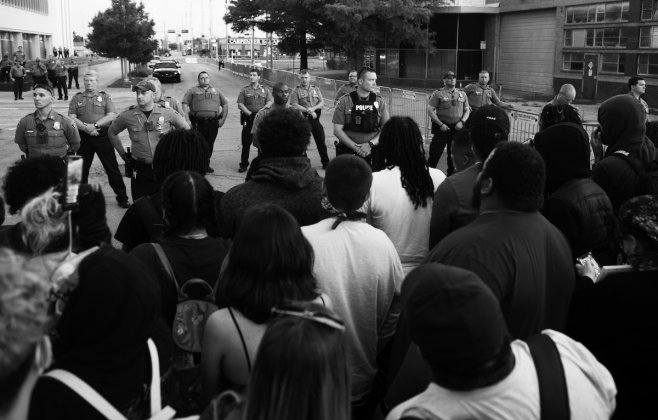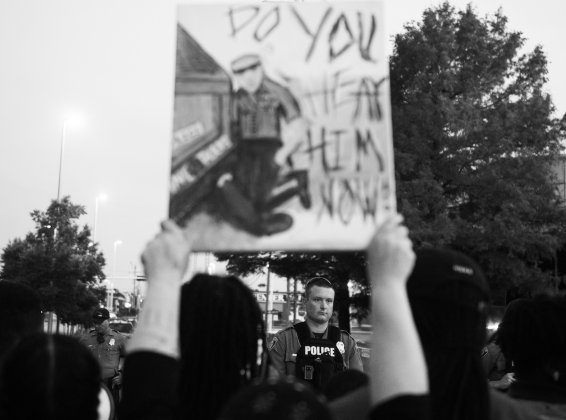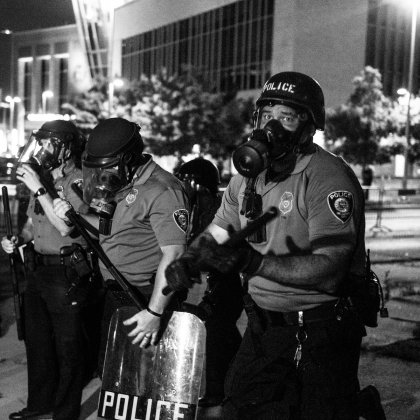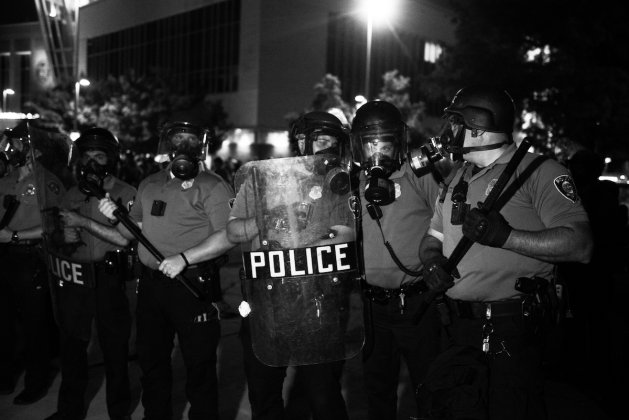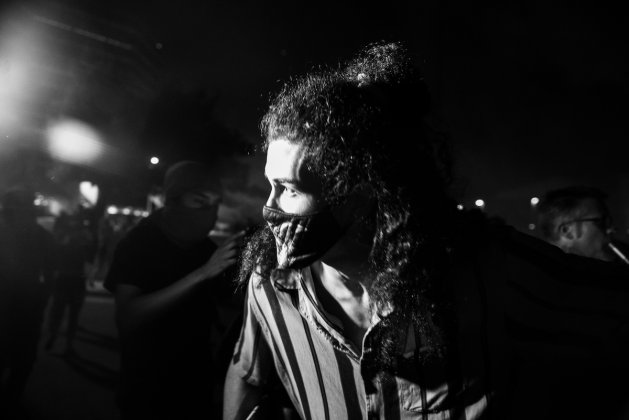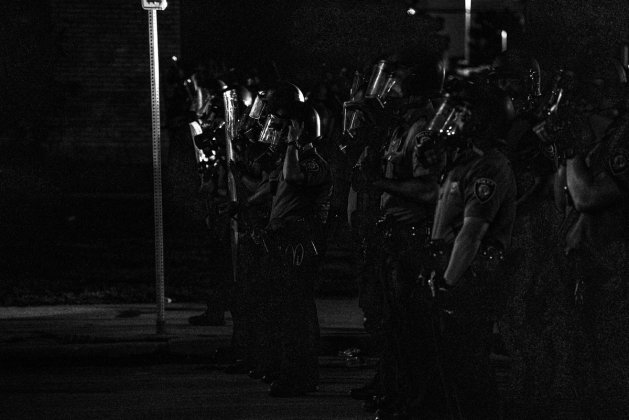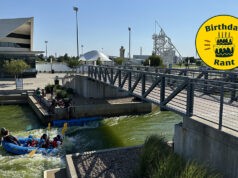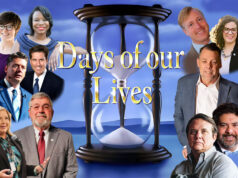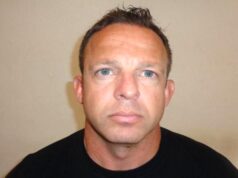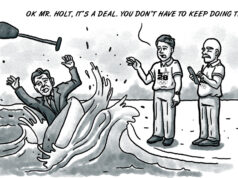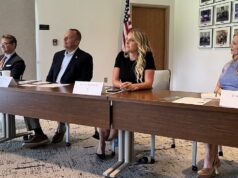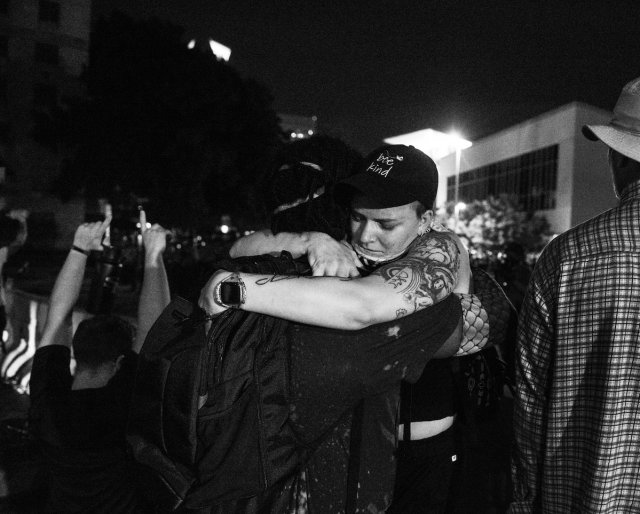

About 2 a.m. Monday, I crawled into bed and called it a day. And what a day it had been.
Sunday afternoon, I had photographed some of the 3,000 people gathered for a Black Lives Matter rally on the hot pavement of a shopping center at Northeast 36th Street and Kelley Avenue in Oklahoma City.
By nightfall, I had found myself photographing at the barricade where protesters confronted police (or was it vice versa?) near the downtown Oklahoma City police station and the Oklahoma County Jail.
Lying in bed, the odor of tear gas wouldn’t go away. It was the sour smell that had wafted down Shartel Avenue after three water bottles were lobbed over a police barricade and all hell broke loose. I had become engulfed in a cloud of tear gas, illuminated like a dense fog in the searchlight of the OKCPD “Air One” helicopter hovering overhead.
The smell of tear gas kept me awake. I have photographed many protests and demonstrations, but Sunday I crossed “get tear gassed by police” off my bucket list.
Trying to sleep, I realized the gas had contaminated my hair and was going to keep me up all night unless I got up and hit the shower. So, I did.
Then I discovered that when you wash it from your hair and the water drips down your face, it becomes liquid tear gas and flows right into your eyes.
I’m clearly a novice at this protest photography business. Mental note: Next time bring a gas mask.
Selfies and conversations
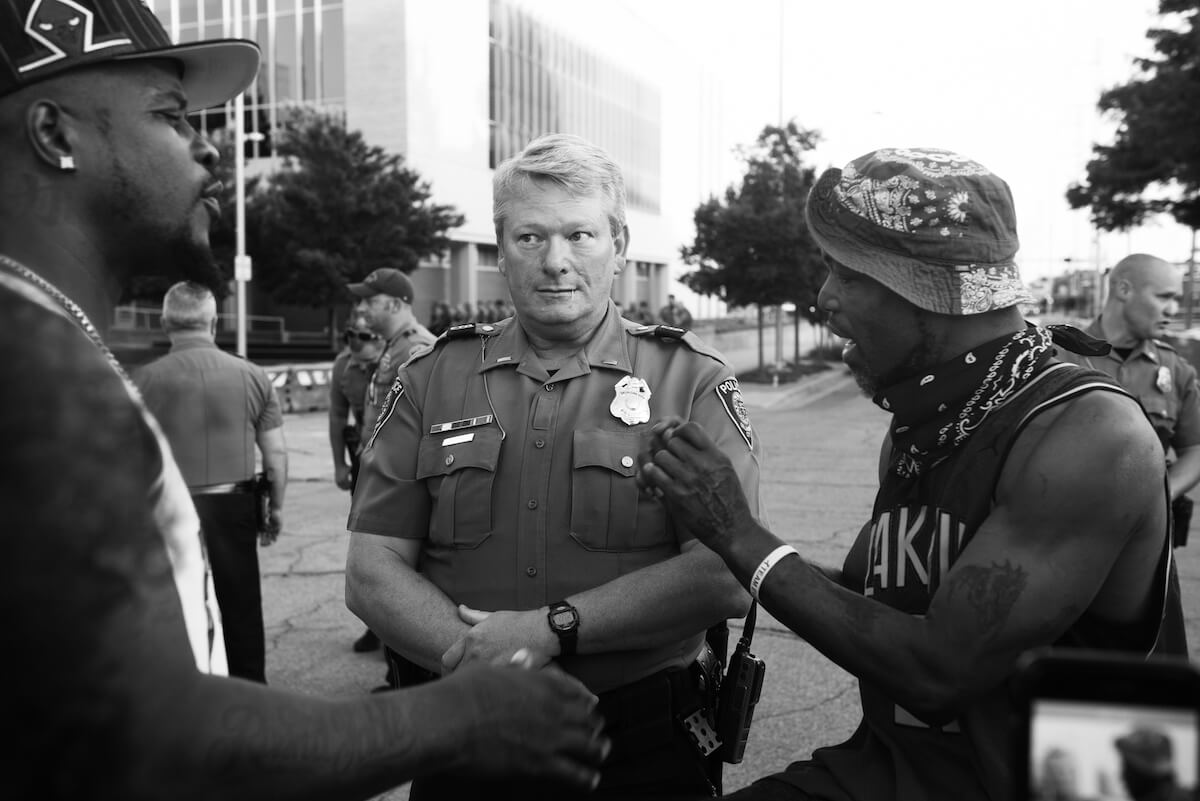
The downtown protesters early Sunday evening were diverse — both racially and by age. Some had marched from the afternoon Black Lives Matter rally in northeast OKC.
It was a peaceful ceremony there, with BLM organizers addressing the crowd. Ward 7 Councilman Nikki Nice took the microphone and encouraged everyone to register to vote.
The event was a pleasant contrast from Saturday’s night of vandalism and skirmishes with police that started at the intersection of Northwest 23rd Street and Classen Boulevard and moved to the downtown police station.
On Sunday, the protesters stopped at the State Capitol and then walked downtown, all to the chant, “No Justice, No Peace!”
But when I arrived at the downtown police station shortly before sunset, the scene was more like a picnic in the park.
Some were having conversations with about a dozen obviously older and seasoned police officers stationed at the front line along plastic barricades erected after Saturday night’s chaotic events.
These police were wearing regular service uniforms and were not carrying rifles, helmets, batons or anything resembling what one would consider “riot gear.”
I eavesdropped on some of the conversations.
“And, so, if there is no probable cause, can they search his house?” a black man who appeared to be in his 30s asked a gray-haired police sergeant. Their discussion of different search and seizure scenarios was reminiscent of a law school criminal procedure class. It wasn’t what I was expecting to hear.
A few feet away, another policeman had been handed a protester’s cell phone and was taking a selfie photo of them and two other officers at the barricade.
‘Oh man. Don’t do that shit!’
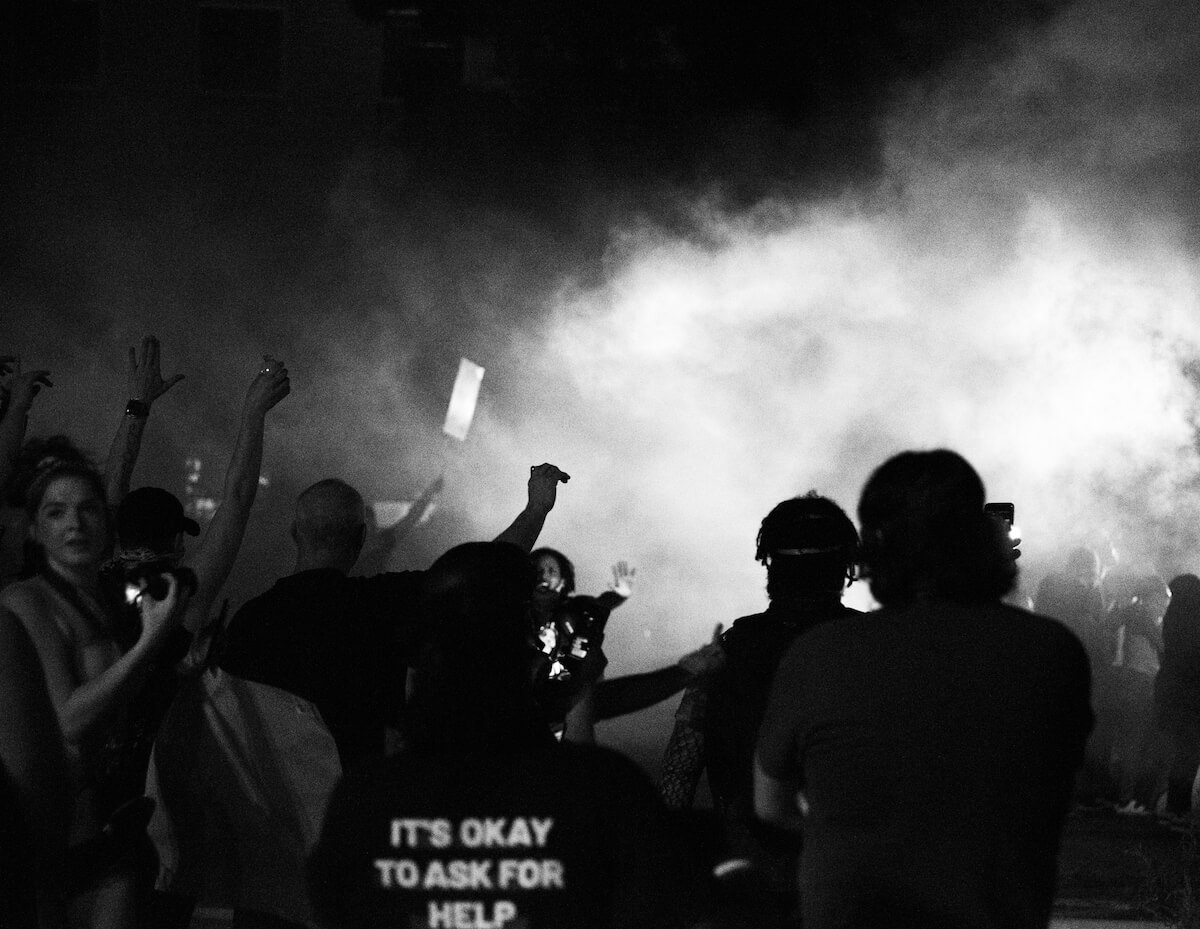
As the sun was setting, a few hundred of those gathered left the police station area, carrying their banners and signs back home. But at least 30 stayed behind.
Then a different group — a younger set of about 30 more — arrived. The tenor abruptly changed.
Chants from the protesters were replaced with the yelling of obscenities.
“Fuck the police,” was a favorite.
The officers immediately backed about 10 feet away from the barricade. The uncoordinated yelling and screaming toward them lasted about 10 or 15 minutes. By that time, the sun was down and a darkness enveloped most of the crowd and police.
I was positioned in the middle of the protesters, but the dearth of light was giving me fits with my exposures, so I moved closer to where a TV cameraman’s light was illuminating part of the scene.
That was my vantage point when I saw three plastic water bottles lobbed from the back of the pack of protesters — up and over the barricade and into the standing police line.
A groan erupted in the crowd. It was a sound I am most familiar with coming from my fellow OU football faithful when our Sooners fumble and the opponent is about to pounce on the ball.
“Oh, man. Don’t do that shit!” screamed a woman standing next to me.
The core of the protesters ran away as the officers pulled out flashlights to see if they could find who did it.
Then a loud bang erupted. An explosion that looked like fireworks sprayed sparks over the remaining crowd and police. Within seconds, the group of older policemen disappeared and three dozen gear-clad police ran from a nearby sidestreet into the scene.
Another standoff began. This time, the face of the police was not friendly. Protesters eased back toward the barricade, and their verbal taunts of police began again.
The officers began putting on their gas masks. One of them in front of me leaned over, pointed my direction, and asked, “Are you all media?”
Three voices, including mine and News 9’s Storme Jones, answered in staccato unison: “Yes!”
You would have thought we had rehearsed our lines.
Afterward, I wondered if the answer we gave — albeit truthful — was the best answer, considering recent national circumstances.
Then, police began shooting canisters into the crowd.
Tear gas is not a precise ordinance, especially when a late spring breeze blows it around. That flushed me out of the area for a moment.
Then I saw a crying woman hugging another person. I ran back through a plume of tear gas to the barricade and made the photograph at the top of this post.
More rounds of tear gas erupted. The crowd had scattered down narrow Northwest 1st Street and north on Shartel, which had not been officially closed to traffic but had become a wide pedestrian mall during this demonstration.
I walked to a point on the sidewalk immediately in front of the county jail to clear my head. Oklahoma County Sheriff deputies had stood guard near the building all evening — about 100 feet from the street and sidewalk.
I was rubbing my eyes when I heard a car’s engine rev up and zoom by, followed by some screams. I looked up to see three men yelling and running after a small pickup speeding northbound.
Two or three others were in the middle of the street helping a young woman with dreadlocks bent over, clutching herself. I didn’t see it, but it appeared she had been struck.
Three county deputies ran up to the temporary barricade at the sidewalk. One of them, carrying a first aid kit attached to his olive combat-style uniform said, “Is she OK? Bring her here and we’ll take care of her.”
Moments later, the medic and three more deputies who guarded him, crossed the barrier and ran across the street to the injured woman.
In an unusual scene, a couple of the protesters joined the deputies in keeping the crowd back while the woman was being helped.
A large Canadian County MRAP vehicle roared out of an opened gate of the jail parking lot and blocked passage nearby. The injured woman was carried by deputies to the jailhouse lawn where EMSA paramedics later arrived.
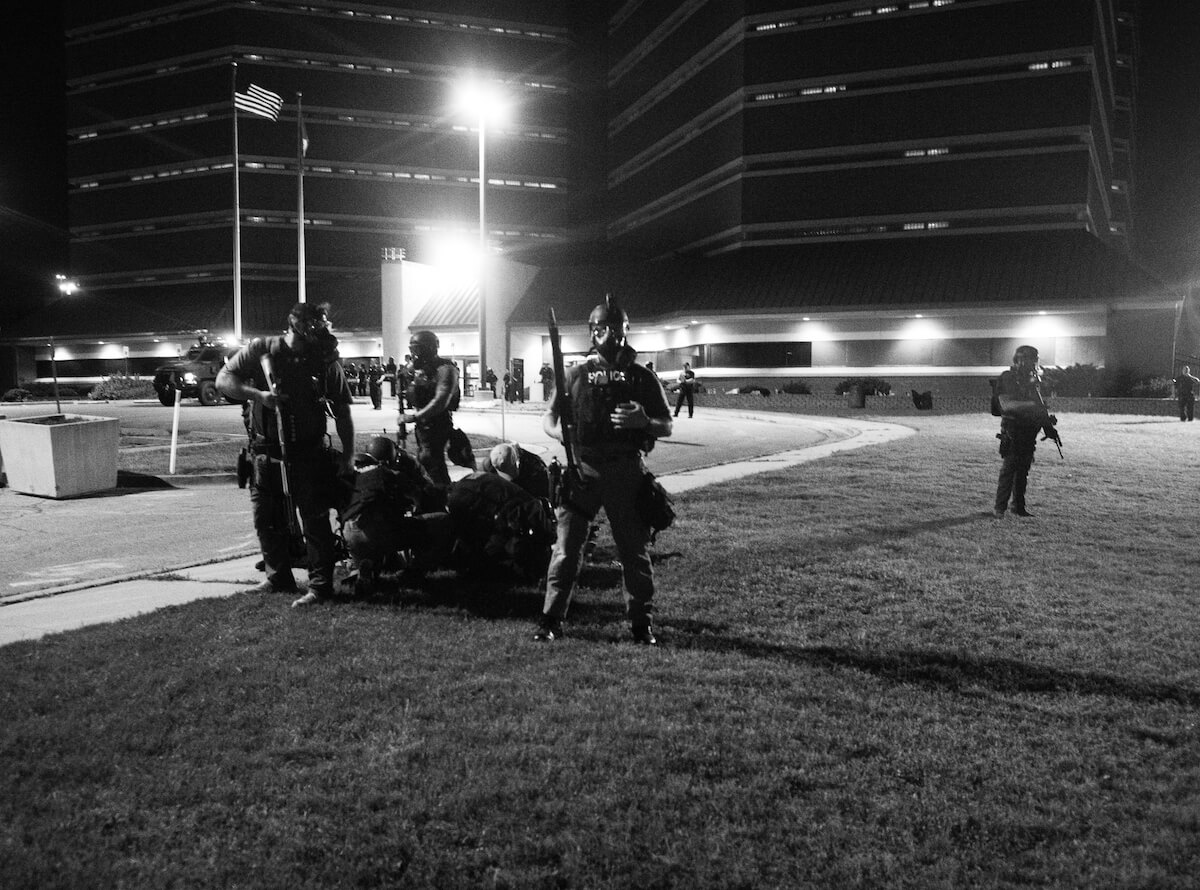
Of parties and curfews
One of the protesters said a curfew was being implemented in 10 minutes.
That was good timing for me. I was tired after a day on my feet, and I was wanting to get home to edit my photographs from the night.
I began to walk to my car parked on Northwest 4th Street. I passed more police guarding the nondescript Police Communications Center, but there were no protesters there. Most people don’t know what the building is.
At Northwest 4th and Shartel where the curfew line was being drawn, there was yet another different crowd. No signs and no chants. No police were there either at the time (they would come later).
But there were 30 or more people in the 17 to 22-aged group cheering on a car full of teen-aged occupants doing donuts in the middle of the intersection.
If there was a party place during this demonstration, I had found it. Out of the shadows came more young people. They had the look of kids on the way to the State Fair midway.
But even more people were leaving. I followed a steady stream of traffic to I-235.
By the time I got home in Norman the television news crews were at Northwest 4th and Shartel, and police and state troopers were shooting tear gas there, too.
Within a couple of hours, my photo editing was over. But the smell of a peaceful protest turned chaotic still lingered.
Protest photography from Sunday, May 31









